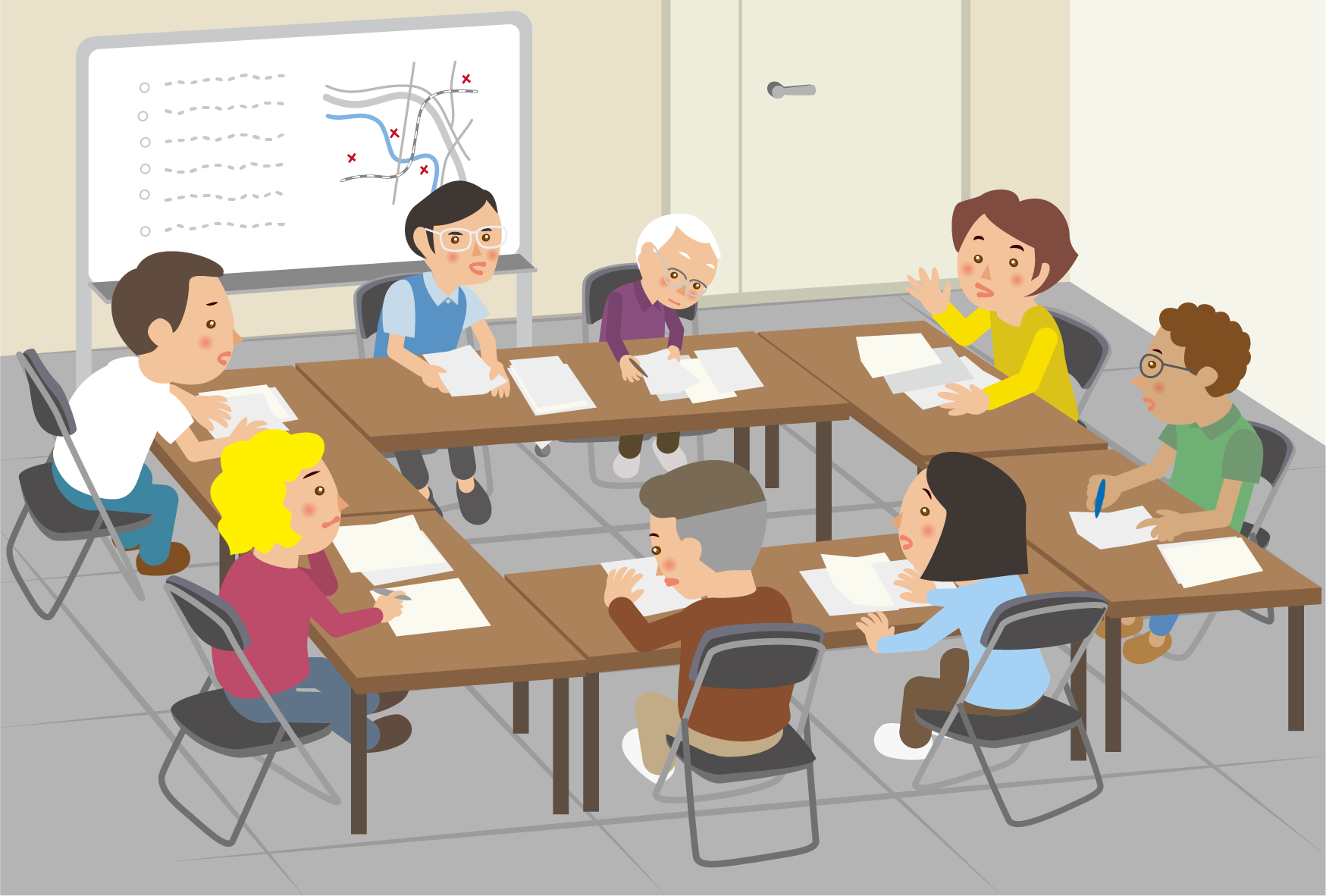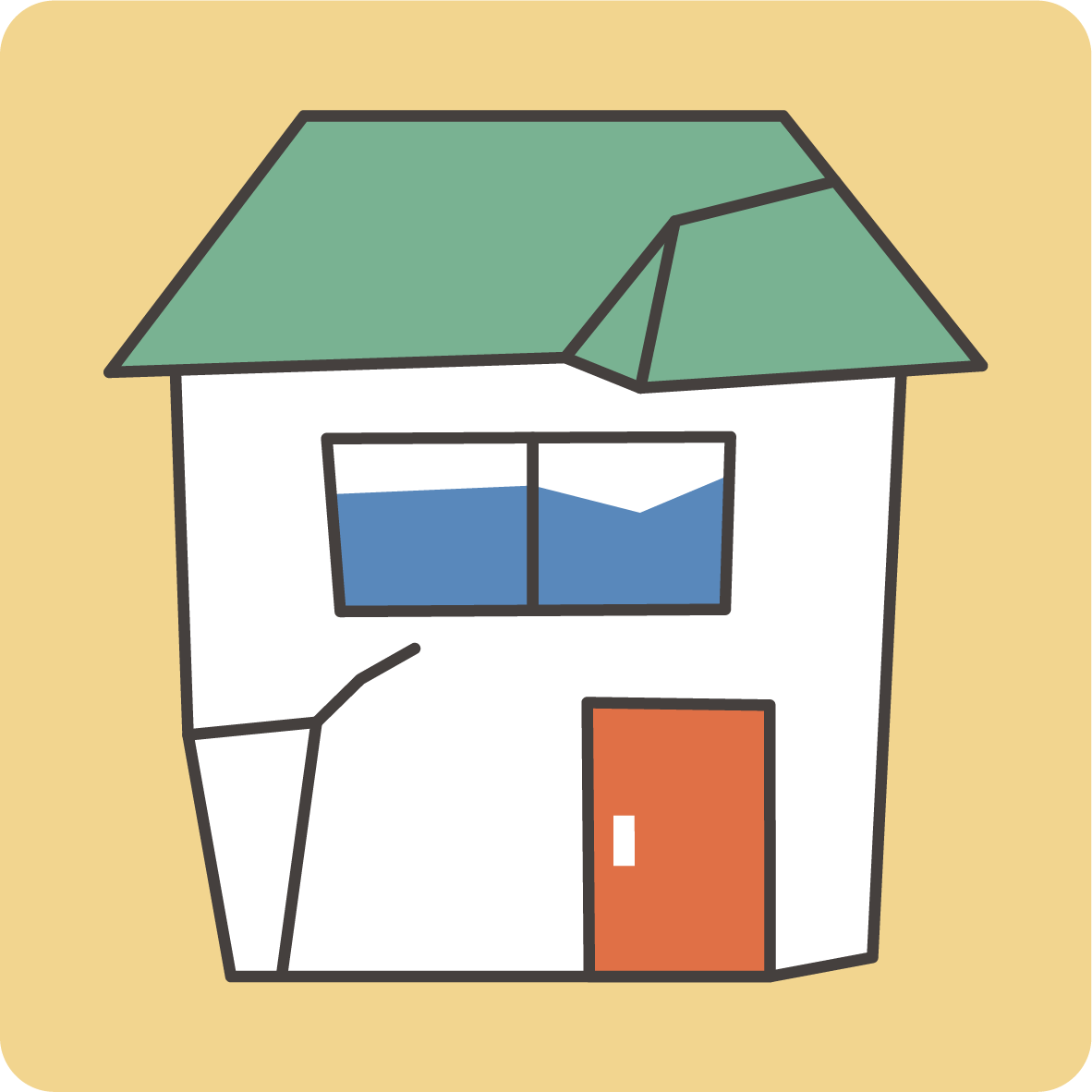
8 Homes
-
-
If you are leaving your home for an extended period, take the following steps.
- Turn off the breaker.
- Close the main gas valve.
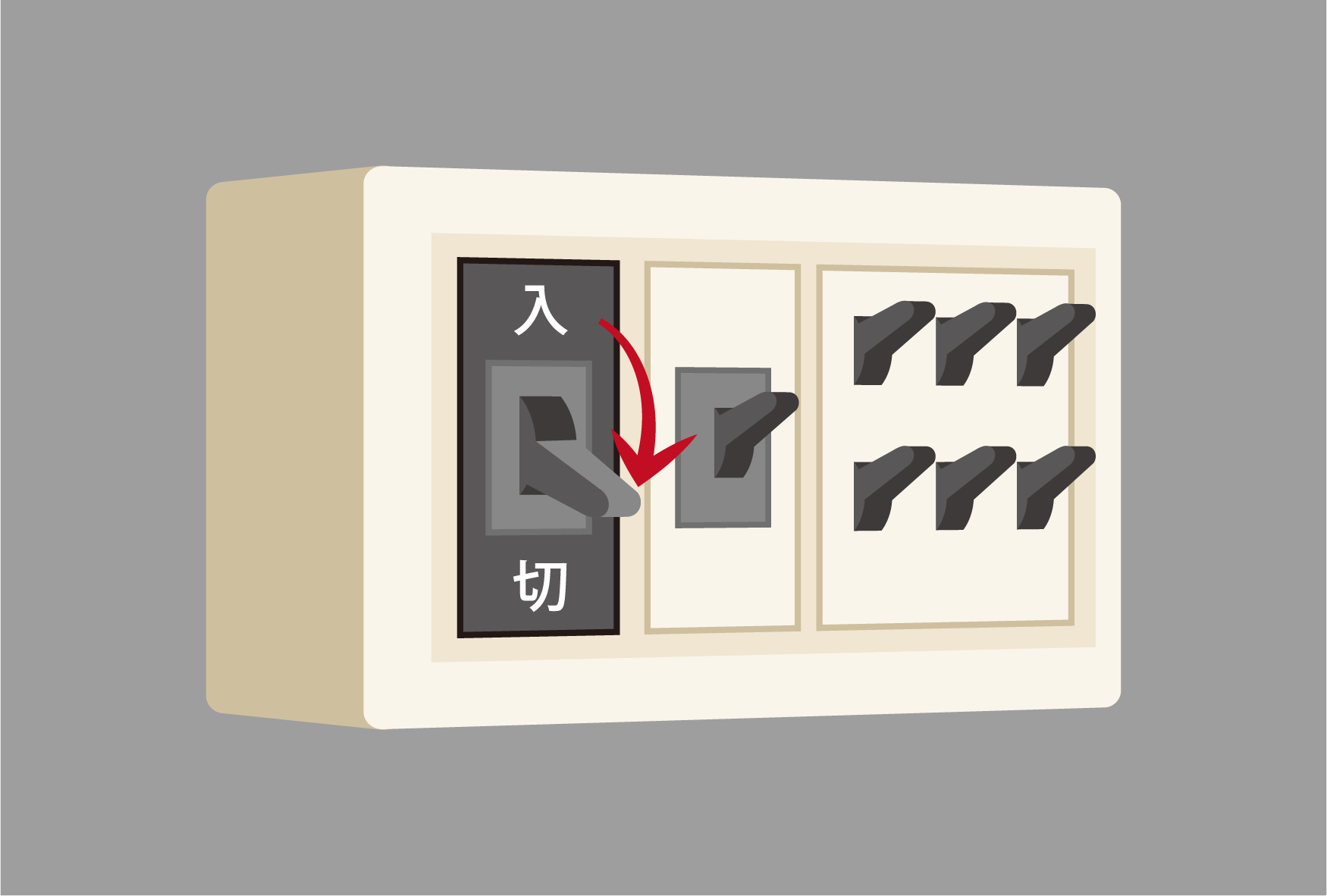
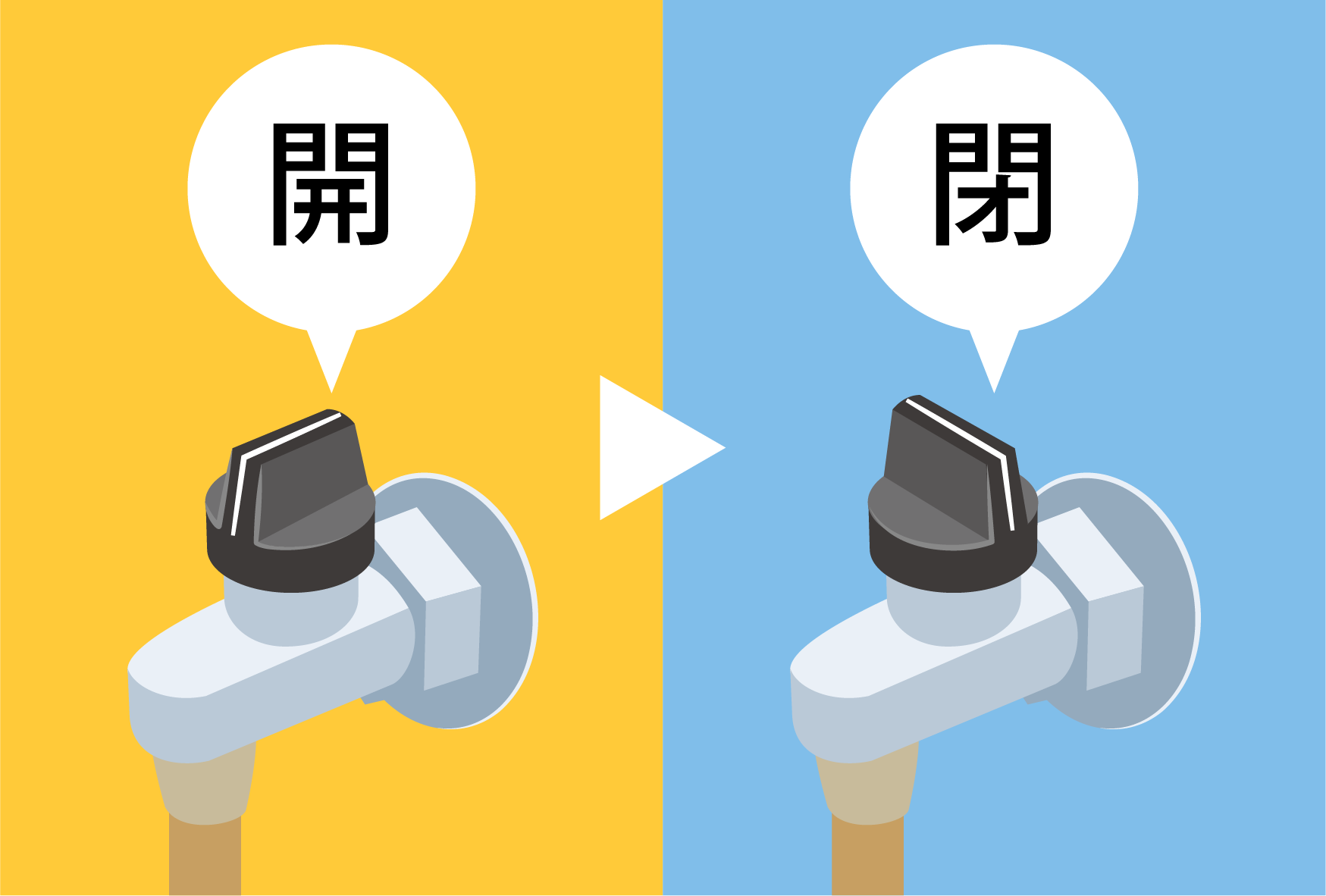
-
There may be inquiries to the city office from people who are looking for you. If you are going to be away from home for a while, let staff at the city office know.
If you leave a place you have been living for some time or move somewhere else, carry out procedures for moving home with the city offices for the area you are leaving and the place you are moving to. -
When you are away from home, return to the area you used to live in from time to time to see notifications from the local government. Check your mailbox for messages from the local government. You should also check the notice boards of local Evacuation Centers (hinanjo) or ask staff there.
-
-
-
These Post Earthquake Quick Inspections of Damaged Buildings (oukyuu kikendo hantei) show how dangerous a home is considered to be.
After a major earthquake, a person registered with the Tokyo metropolitan government will come to determine if your home is safe or not, posting a sign (red, yellow or green) on the home to show the result.
If a sign has been stuck to your home, follow the appropriate rule.- Red: The home is dangerous, so you should not enter.
- Yellow: Take great care when entering the home.
- Green: Damage to the home is minor. It is okay to enter the home.
☞ Glossary: Post Earthquake Quick Inspection of Damaged Buildings
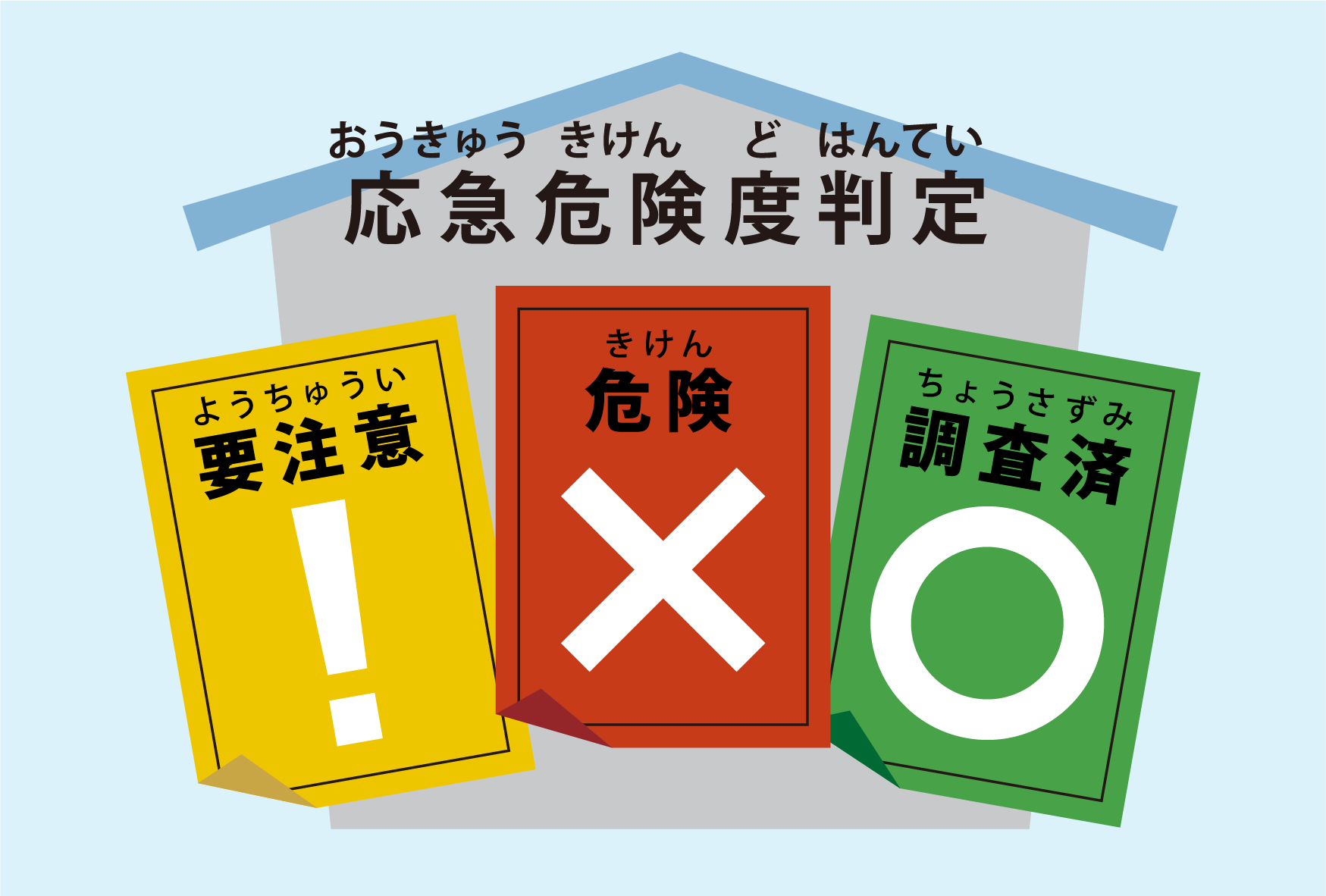
-
You will not know if your home is safe or not until the sign is posted.
Avoid entering your home until then.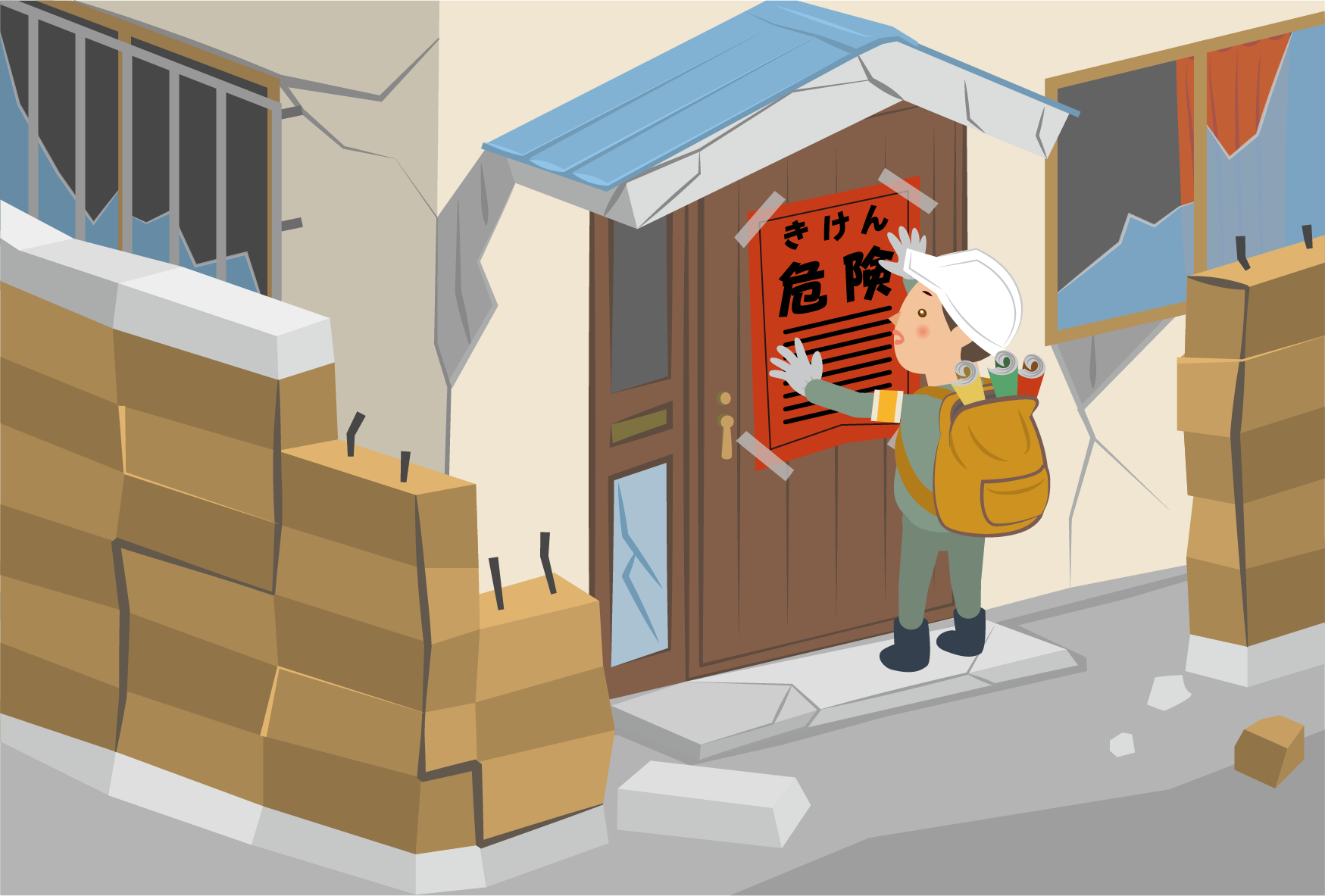
-
The Post Earthquake Quick Inspection of Damaged Buildings does not show whether the building can be used long-term. It is also unrelated to the damage evaluation for Disaster Victim Certificates (risai shoumeisho).
Regardless of the result of the Post Earthquake Quick Inspection of Damaged Buildings, when your home is damaged, you should get a Disaster Victim Certificate from the local government and make a plan for repairs.
Ask the city office for details.
See 9-2 for more information about Disaster Victim Certificates.
-
-
-
Before attempting to clean up or repair the home, take photos showing where and how far the home has been damaged and where water has reached. These will help when applying for a Disaster Victim Certificate (risai shoumeisho) or making an insurance claim.
Take photos of both the outside and inside of the home.
Take photos of the whole home, the damaged parts, and where water has entered.<Example>External Photos- Take photos of your whole home from four directions.
- If water has got into your home, take photos showing how high it has reached.
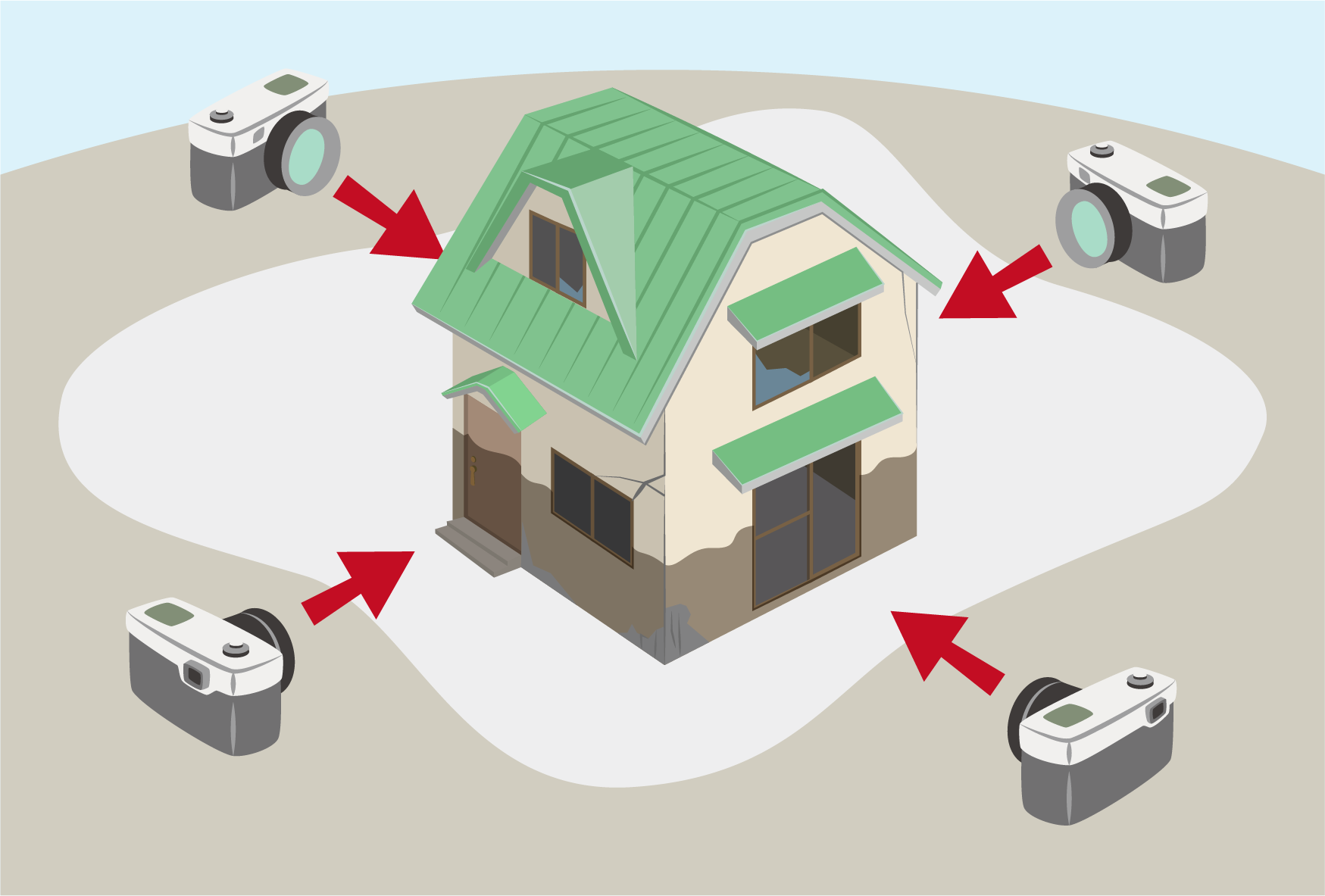
-
Use a measuring tool from ground level to see how high water has reached.
-
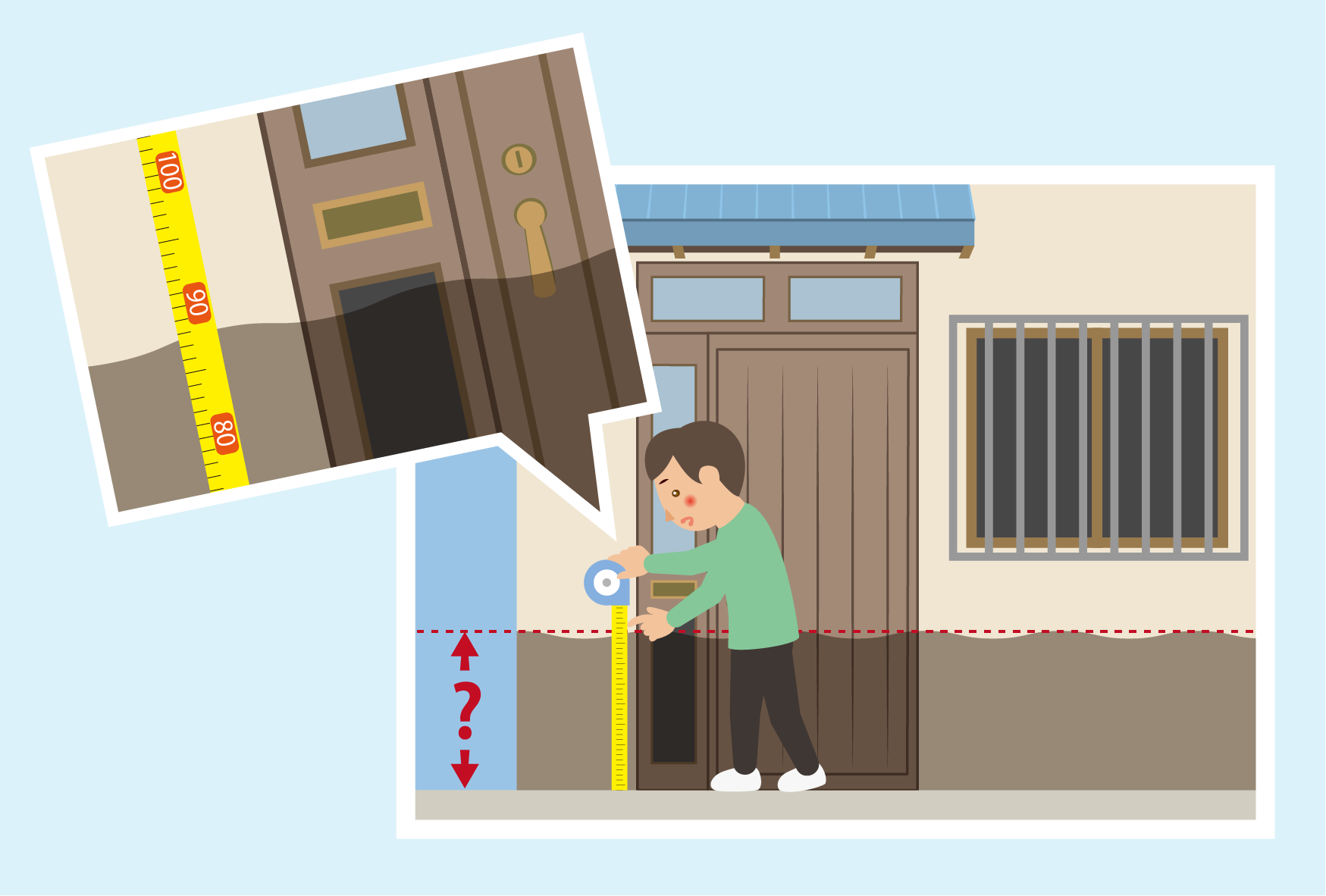
Take one photo that includes the measuring tool showing the water level, and another one from a distance.
Including a person in the photo makes it easier to understand the height the water has risen to.
Internal Photos-
Take photos of entire rooms that show the areas that have been damaged.
-
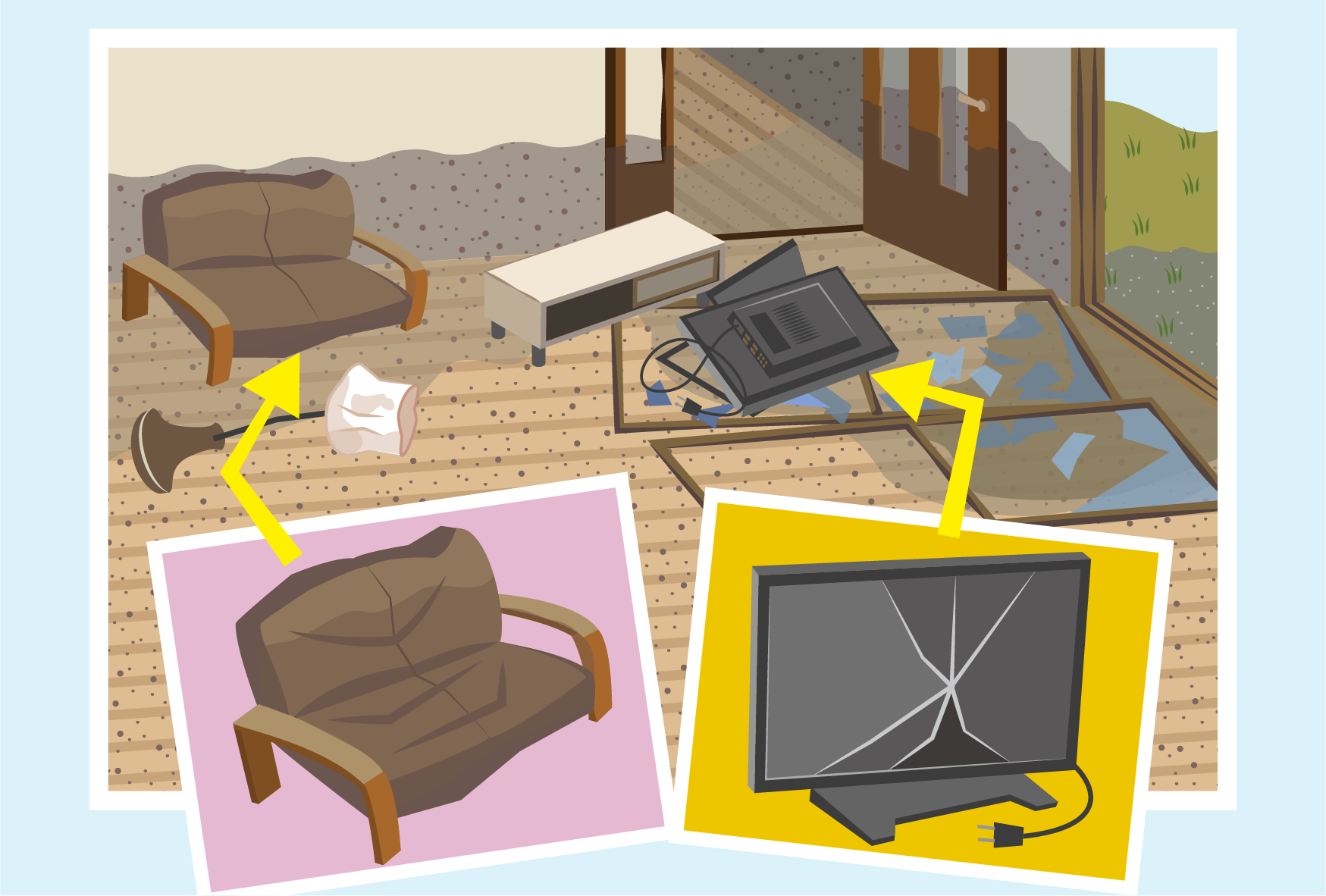
Take photos that only show the damaged areas.
-
Consult with the city office and obtain a Disaster Victim Certificate.
A Disaster Victim Certificate is required if you want to receive aid from the national or local government.
See 9-2 for more information about Disaster Victim Certificates. -
When your whole home has been destroyed, you can borrow the money you need to rebuild it. Ask at the city office.
-
When repairing your home, before construction begins, confirm what kind of construction will be carried out and how much it will cost via a written contract. Be wary of rushing with repairs and being cheated as a result.
-
If you are unsure who to entrust repairs to, or have concerns, ask at the city office.
-
-
-
After a major disaster, it is common for there to be issues with money where home repairs and construction are concerned.
(e.g. After being offered a free roof inspection, you are pressured to sign a contract for expensive leak repairs.)Even if construction workers come to your home, don't make any immediate decisions.
If in doubt, consult with the police, city office or neighbors. -
You may be able to get your money back even after entering into a contract.
■Tokyo Metropolitan Comprehensive Consumer Center
Call the number below for consultations.Phone: 03-3235-1155 (5 Languages)
Consultations are free. Phone charges apply.https://www.shouhiseikatu.metro.tokyo.lg.jp/sodan/sodan_foreign.html(Japanese only)
-
-
-
"Blue sheet" is the Japanese term for a tarpaulin (tarp) — sheets made from plastics like polyethylene.
When your roof is damaged, you can use a tarp to cover the damaged portion to prevent leaks. -
When a disaster has occurred, the local government may distribute tarps.
Ask at the city office. -
If placing the tarp yourself would be difficult, you can ask for help at the city office or a Disaster Volunteer Center.
There may be people claiming to be professionals who will charge expensive fees to do the job, so take care when asking for help.
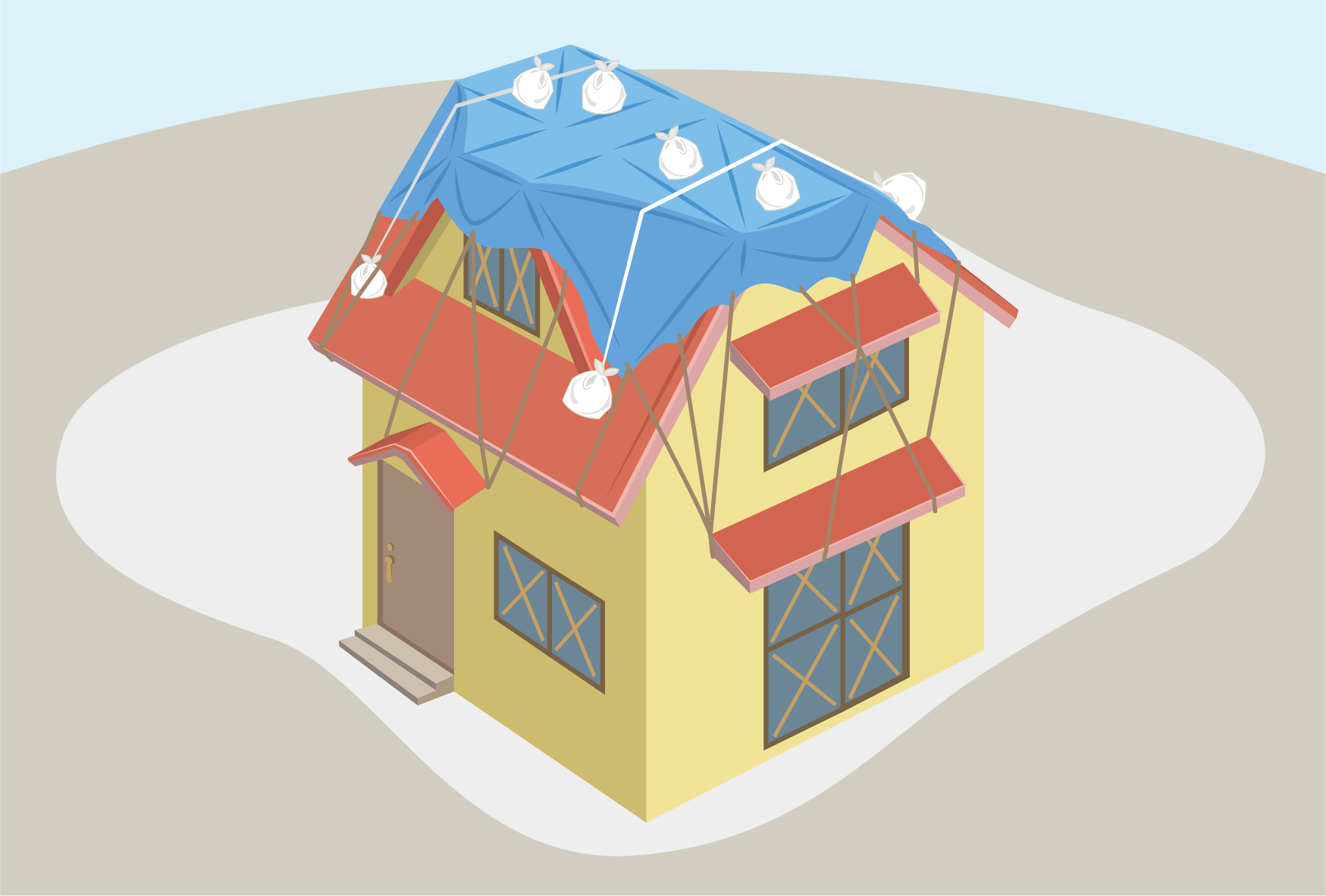
-
-
If you don't do anything, mold will grow.
You will need to remove the flooring or tatami to allow the floor to dry out.
Special skills are needed for this, so ask a professional.
Try asking at the city office or a Disaster Volunteer Center.
There may be people claiming to be professionals who will charge expensive fees to do the job, so take care when asking for help.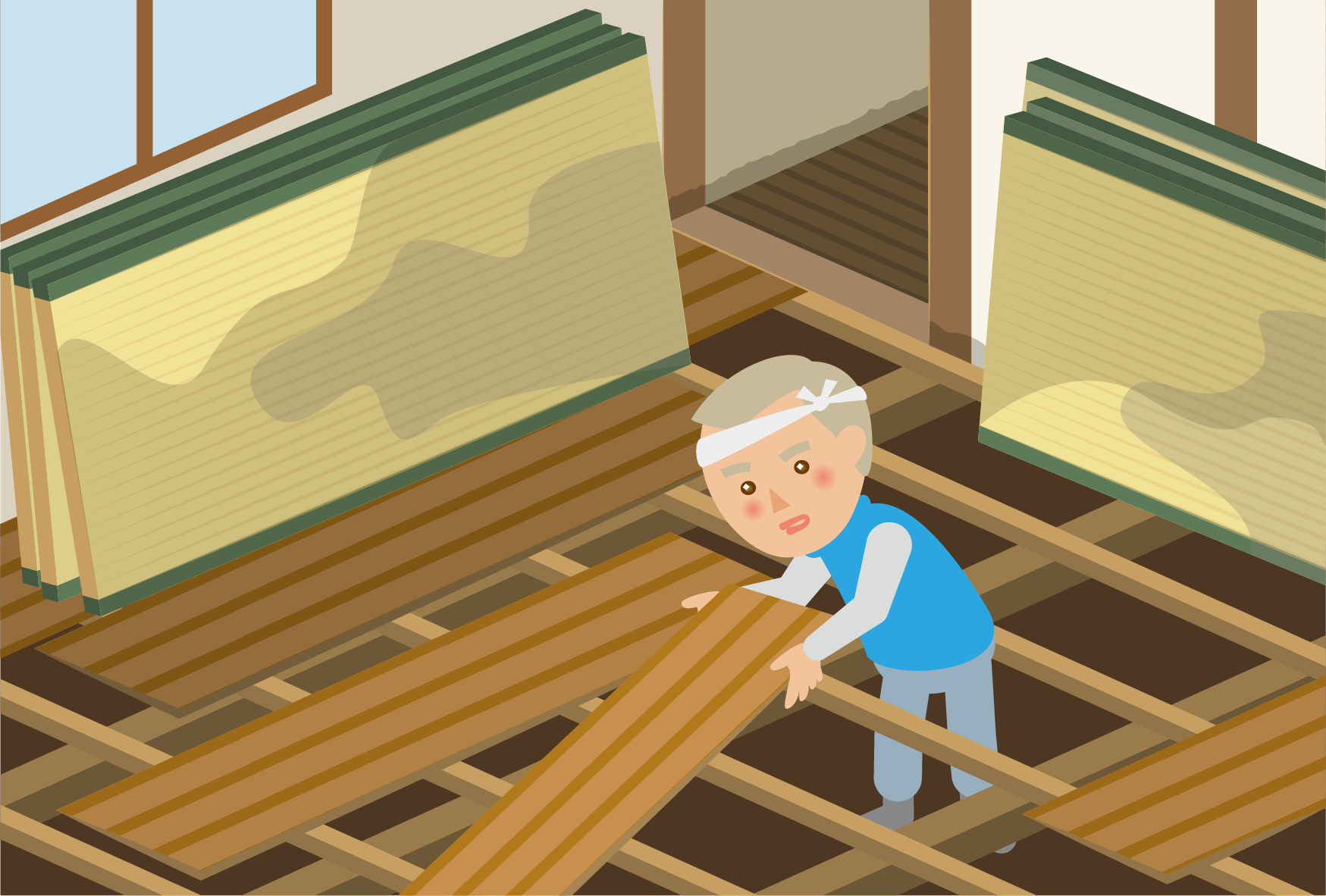
-
-
After a major disaster, local governments etc. will often set up Temporary Housing (kasetsu juutaku) for people to live in temporarily.
Ask at an Evacuation Center (hinanjo) or city office.☞ Glossary: Temporary Housing
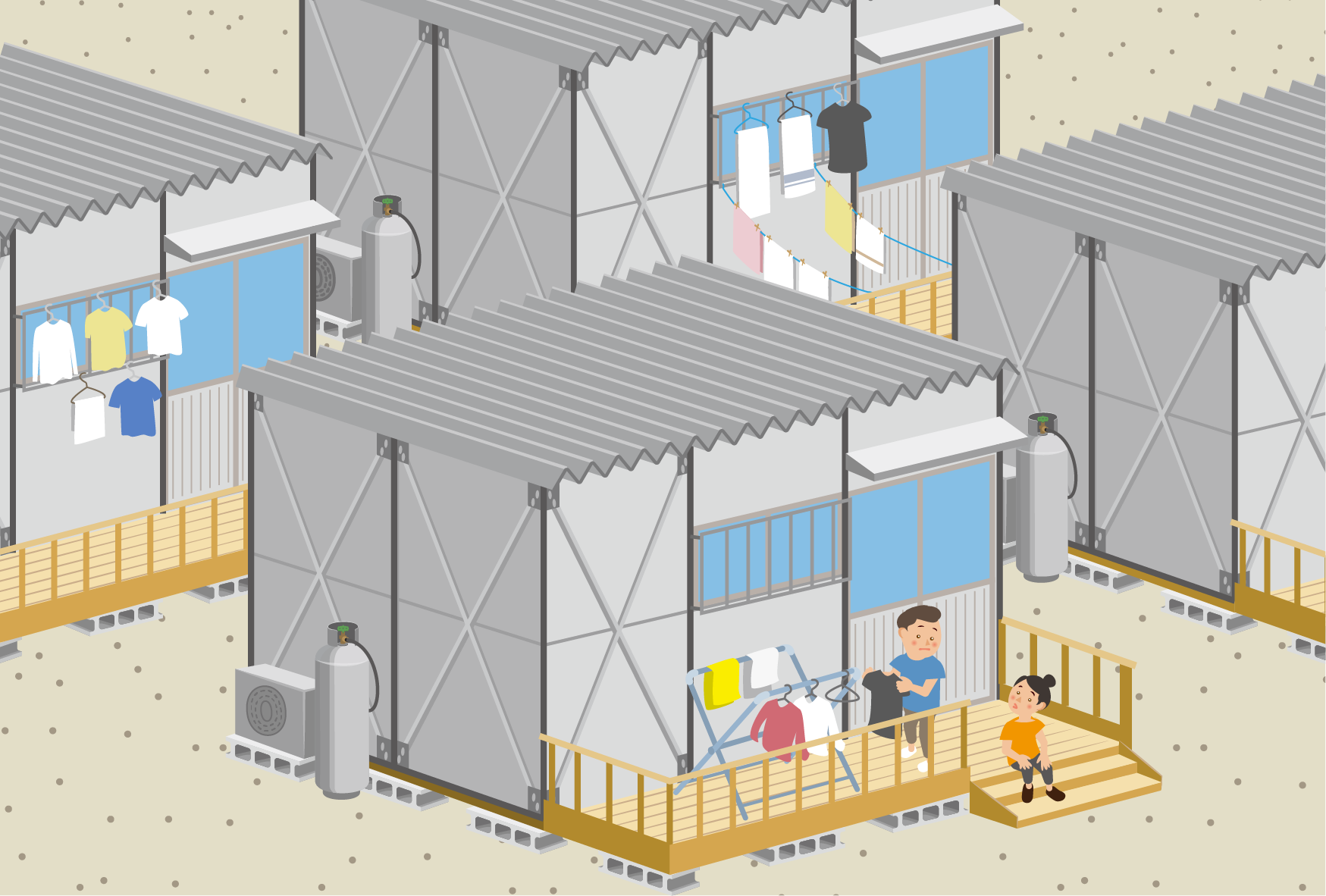
-
In addition to Temporary Housing, you may consider staying at a friend or relative's house or in rented accommodation.
See the following page for more information. (4 Languages)
■Temporary Housing in Tokyo (Tokyo Housing Policy Headquarters)https://www.juutakuseisaku.metro.tokyo.lg.jp/about/leaflet_tokyokari.html(Japanese)
https://www.juutakuseisaku.metro.tokyo.lg.jp/about/pdf/leaflet_tokyokari_A4_en_01.pdf(English)
-
-
-
Ask at the city office and obtain a Disaster Victim Certificate (risai shoumeisho). A Disaster Victim Certificate is required if you want to receive aid from the national or local government.
See 9-2 for more information about Disaster Victim Certificates. -
The following assistance is available to those struggling because of damage to their homes.
-
Support fund for disaster victims to rebuild their lives: Provides money necessary for everyday life.
☞ Glossary: Support fund for disaster victims to rebuild their lives
-
Disaster Relief Fund: Loans money to cover living costs.
☞ Glossary: Disaster Relief Fund
-
Disaster Reconstruction Housing Loan: Loans money required to rebuild homes.
☞ Glossary: Disaster Reconstruction Housing Loan
For more details, see "Financial support available in the event of a disaster".
☞ Glossary: Financial support available in the event of a disaster
-
-
The kind of things money will be loaned for differs between local governments. Ask at the city office.
-
You can receive money if your home is insured against earthquake damage.
Check with your insurance company and follow the appropriate procedures.
-
-
There is a system in place to reduce mortgage debt if your home is damaged in a disaster.
Ask your bank or at the city office. -
Local residents should get together and decide what kind of neighborhood they want to have.
Building construction will begin from there.
Discussions can also happen with city office staff.
These discussions may take years.
If residents come to an agreement quickly, construction of buildings can begin promptly.
Do your best to contribute to these discussions.